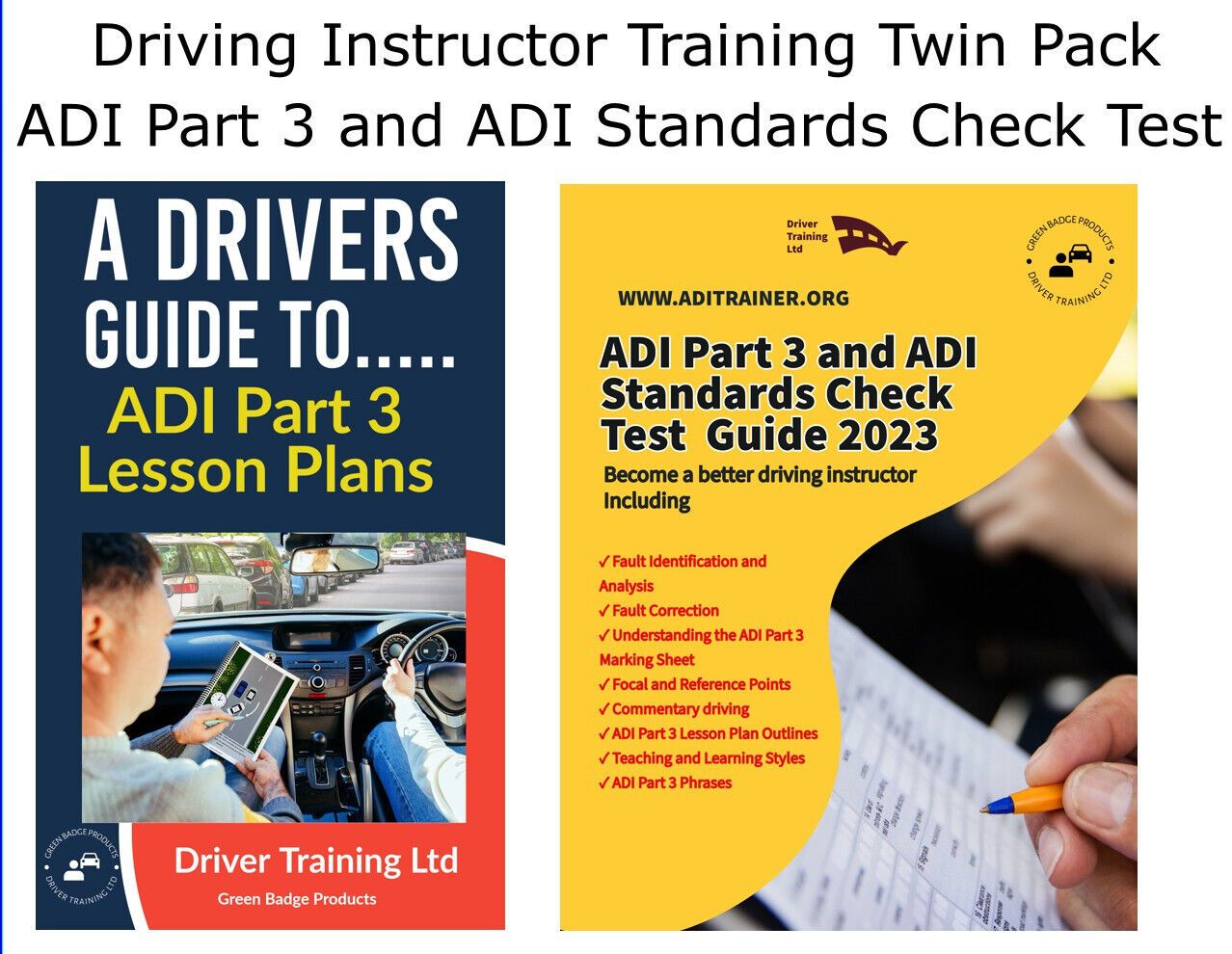ADI Standards Check Test - LESSON PLANNING
A lesson plan is the driving instructor’s opinion of what the student needs to learn and how it will be done effectively during the driving lesson.
The driving instructor can then decide on the appropriate subject or topic to teach on the driving lesson and be able to obtain feedback from the student and what they are learning. Having a carefully constructed lesson plan allows the pupil to have specific goals in mind and helps them to track their own progress in learning to drive.
A successful lesson plan consists of 3 things:
Learning Objectives - Practice - Review to check for student understanding
A lesson plan provides your pupil with a general outline of the learning goals, learning objectives, and means to accomplish them.
A productive lesson is not one in which everything goes exactly as planned, but one in which the student feels they at least understand the subject and what is required more fully

Get your ADI Standards Check Test Guide
Our ADI Standards Check guide breaks down the Standards Check Marking Sheet, helping you to understand more about what is required for the ADI Standards Check Lesson Planning
OUR Lesson Plans Folder - gives you the outline dor each subject and how the structure is for the ADI Standards Check and the ADI Part 3
As well as comprehensive diagrams for each subject including
ALL 2023 manoeuvres
Anticipation
Overtaking
Motorways/Country Roads and Dual Carriageways
Lesson Planning
Part of Lesson Planning is the structure of a lesson
IT always follows the same criteria
Recap the last driving lesson / Does the pupil have any experience of todays subject or in anything related to it?
Learning Objectives - Goals that can be reached by the end of todays lesson
How to do the subject - This should be given either as a full explanation or by means of question and answer

ADI Standards Check Test - LESSON PLANNING
Is this lesson something that the pupil needs to work on - Or just a subject that you like teaching?
The lesson structure should allow the pupil to progress at a manageable rate; stretching them without overwhelming them.
For example, a pupil who is concerned about entering roundabouts should not be asked to tackle a fast-flowing multi-lane, multi-exit junction as their first attempt.
Neither should they be restricted to very quiet junctions, unless the ADI identifies a potential risk issue that they want to check out first
Does your route mean they do a large roundabout on a fast road, followed by a mini roundabout, followed by a 3 lane spiral roundabout - (All 3 need different approaches and attitudes to dealing with them) Focus on one type first and then move on.


Did the trainer identify the pupil's learning goals and needs?
Did the trainer identify the pupil's learning goals and needs?
In this case the sorts of things that would give an indication of competence include:
• encouraging the pupil to say what they want from the lesson
• asking questions to ensure understanding
• checking understanding as the lesson progresses
• listening to what the pupil is saying
• taking note of body language
If an ADI encourages the pupil to say what they want, asks questions to check understanding at the beginning and as the lesson progresses, listens to what they are saying and also picks up on body language they are likely to get a 3.
If, on the other hand, they do all the listening bits but fail to spot the learner getting very tense and nervous in a particular situation they would probably get a 2.
Indications of a lack of competence could include:
• making assumptions about understanding or experience
• failing to note negative or concerned comments or body language that shows
discomfort
• undermining the pupil’s confidence by continually asking questions clearly beyond
the pupil’s knowledge or understanding
• pushing the pupil to address issues that they are not happy to talk about, unless
there is a clear need, such as an identified risk or a safety critical issue
Was the agreed lesson structure appropriate for the pupil's experience and ability?
Indications that all the elements of competence are in place could include:
• ensuring the pupil understands what they plan to do and agrees with that plan
• a lesson that reflects the information given by the pupil and the learning goals they want to tackle
• building in opportunities to check the statements made by the pupil before moving to more challenging situations
• checking theoretical understanding
Indications of lack of competence include:
• delivering a pre-planned, standard lesson that doesn’t take into account the pupil’s expressed needs or concerns
• failing to build in a suitable balance of practice and theory (Talking about it in depth for 10 minutes but not actually letting them practice it)


Heading Text
This is an Image & Text block. Click on this text to start editing and enter your own text with some basic formatting. Just click anywhere outside the text box when you're done to continue working on the rest of your page.
To change the layout and appearance of a block, such as the size of its images and columns, click on the Change Layout button on the block toolbar, to the right of each block.
Heading Text
This is an Image & Text block. Click on this text to start editing and enter your own text with some basic formatting. Just click anywhere outside the text box when you're done to continue working on the rest of your page.
To change the layout and appearance of a block, such as the size of its images and columns, click on the Change Layout button on the block toolbar, to the right of each block.
